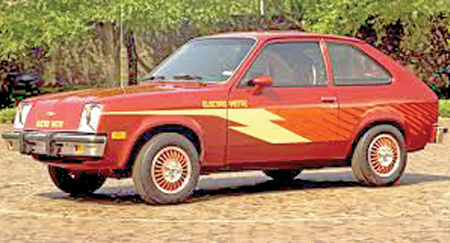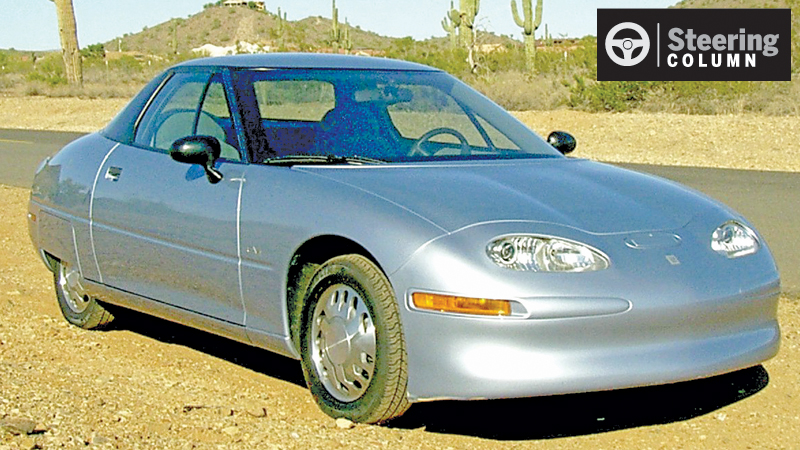If you think that electric cars are a new phenomenon, you are mistaken. They were a hot item in the early 1900s, but they were killed off by the Internal Combustion Engine (ICE) which used either petrol and diesel (which should ideally be capitalised because it is a person’s surname).
Oil was cheap and electric batteries and charging technology were still in their infancy. There was no contest. ICE won by a huge margin – to the point where the electric car was totally obliterated. Worse, the car industry even campaigned against the other electric powered transport system – tram cars – and managed to scuttle them in many cities including New York and Colombo.
Sadly, the rise of the ICE car stalled the development of electric cars until the oil shock of the early 1970s. Only then did the car industry wake up to the harsh reality that ICE may not be sustainable in the long term. However, oil prices fell again and things got back to square one.
America did not give up its love affair with huge cars with equally huge eight or even 12 cylinder engines, even though Europe was moving to smaller cars mainly because of narrow roads and scarce parking.
The first modern electric car was made by General Motors (GM) in 1996, appropriately called EV1. In the late 1970’s GM decided to design an electric car. It was called the Electrovette, in part because it was a Chevette converted to battery power. Its motor was Direct Current (DC) and its batteries were made of zinc nickel oxide.
 About 1,100 EV1s were produced by GM and leased to selected drivers at a monthly cost of US$ 250 to US$ 500. GM did not want to sell the car outright, as it would have been priced around US$ 60,000 which was prohibitively expensive for that time. Besides, the car could only travel up to 160 Km on a full charge, whereas most ICE cars could easily manage 400-500 Km.
About 1,100 EV1s were produced by GM and leased to selected drivers at a monthly cost of US$ 250 to US$ 500. GM did not want to sell the car outright, as it would have been priced around US$ 60,000 which was prohibitively expensive for that time. Besides, the car could only travel up to 160 Km on a full charge, whereas most ICE cars could easily manage 400-500 Km.
GM however decided that the EV1 program was unsustainable, recalled all the cars from customers (most of whom wanted to keep them) and crushed them at a facility in Arizona, in one of the dumbest moves by a major auto company in living memory. This was a major blunder that lost many customers for the company that had so many nameplates – Chevy, Buick, Cadillac, Pontiac and Oldsmobile (the last two are now defunct).
Even as GM wound up the EV1 program, Japan’s Toyota unveiled a compromise solution in 1997 – the Prius, a car that combined a normal ICE engine with an electric battery. Thus the “hybrid” was born. Toyota championed hybrid cars for around two decades before making an electric-only car in 2023.
Electric cars never really got off the ground until Tesla, a totally new company, came to the scene in the 2000s. Elon Musk and his team built an all-electric car from the ground up at a time when legacy carmakers were struggling to build one.
This electric car simply called the “Roadster” was rather expensive, but its success helped Tesla to launch several new, more affordable models down the line such as Model X, Model Y, Model S and Model 3. To this date, Tesla remains a leader in Battery Electric Vehicle (BEV) technology, though China’s Build Your Dreams (BYD) has surpassed it in terms of sales in many countries.
Today, there are many Chinese and non-Chinese BEV only marques, including Rivian, Slate, Polestar, Lucid, Zeekr, Leapmotor and Scout (from the VW Group). Most legacy carmakers also make electric versions of their ICE cars and offer some BEV-only models. And BEVs are getting cheaper as economies of scale kick in.
But battery technology remains the holy grail of electric cars – the goal being longer range and shorter charging times. Resistance to both extreme hot and cold weather is another goal. In these pages we have reported on attempts being made in this direction.
Even with current technology, some BEVs can go as far as 700 Km on a full charge and fill up to 80 percent of the battery in just 20 minutes. In just a few years, 1,000 Km on a single charge will be an everyday possibility. This will even rival some hybrids that can stretch every last drop of petrol.
Whatever the naysayers say, BEVs are the future. Yes, ICE has some more years to go – may be 20 or 30. Carmakers will continue to make ICE cars for those who demand the “fill up and go” convenience of fossil-fuel powered cars without any “range anxiety”. But fossil fuels are a finite resource that is going to run out sooner than we think. The petrol or diesel car you buy today may be your last oil-powered vehicle. By the time it is your turn to replace it, BEVs may be the only choice.







